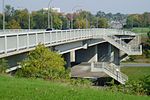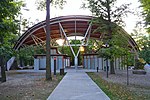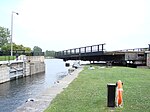St. John the Baptist Ukrainian Catholic National Shrine
Canadian church stubsChurches in OttawaEastern Catholic church stubsEastern Catholic shrinesRoman Catholic national shrines in Canada ... and 3 more
Ukrainian-Canadian culture in OntarioUkrainian Catholic churches in CanadaUkrainian Greek Catholic Church stubs

St. John the Baptist Ukrainian Catholic National Shrine is a prominent Ukrainian Catholic church in Ottawa, Ontario, Canada.
Excerpt from the Wikipedia article St. John the Baptist Ukrainian Catholic National Shrine (License: CC BY-SA 3.0, Authors, Images).St. John the Baptist Ukrainian Catholic National Shrine
Green Valley Crescent, (Old) Ottawa River
Geographical coordinates (GPS) Address Phone number External links Nearby Places Show on map
Geographical coordinates (GPS)
| Latitude | Longitude |
|---|---|
| N 45.376388888889 ° | E -75.703333333333 ° |
Address
St. John The Baptist Ukrainian Catholic Shrine
Green Valley Crescent 952
K2C 3V4 (Old) Ottawa, River
Ontario, Canada
Open on Google Maps








